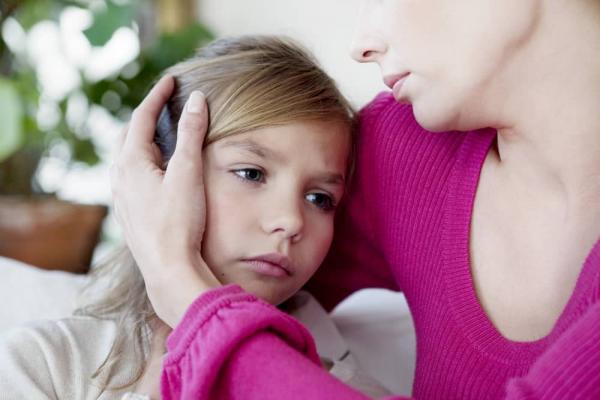
For 40 years the biggest obstacle in curing childhood cancer has been late diagnosis; no one thinks his or her child has cancer. Furthermore, symptoms of cancer can be similar to many other childhood diseases, making it difficult to diagnose in time. However, the majority of children's diseases (usually viruses) disappear between 7 and 10 days; but not when it comes to cancer.
You must remember that children are not small adults. Their physiology is different, so signs of cancer will also be different. But prevention of childhood cancer is rarely mentioned since many of the causes can't be identified. There are a few risk factors - usually genetic predisposition and causes associated with virus infections - and there are less incidences of cancer in children than adults. Also, cure rates are higher for children than adults.
Pay attention to complaints of children and adolescents. Be aware if symptoms persist despite treatment.
Symptoms of childhood cancer
1. Weight loss - unexplained and ongoing.
2. Pain in the bones and joints when playing games or other activities.
3. Vomiting accompanied by headaches, usually in the morning.
4. Lumps that do not yield - usually appearing on the neck, armpits, groin and abdomen.
5. Increased belly volume
6. Petechia - tiny red spots that indicate bleeding of blood vessels, generally capillaries.
7. Purple spots on the skin (hematoma)
8. Off-white brightness on a retina when the eye is exposed to light
9. Constant tiredness and paleness - anemia.
10. Persistent fever of undetermined or unknown origin.
11. Frequent infections, indicating low immunity.
If you identify one or more of these symptoms in your child or teen, seek medical attention. If the problem persists even after consultation and treatment, return to the doctor and insist on a more careful diagnosis or consult a second opinion.
The most common types of cancer in children and adolescents are
Lymphoma
This cancer attacks the lymphatic system, a network of organs and tissues responsible for organic defense and carrying a fluid called lymph - one of the blood system components which is engaged in cellular nutrition.
Leukemia
A cancer that affects the white blood cells (leukocytes), which are also responsible for defending the body. This impairs the functioning of the bone marrow, which prevents the production of normal blood cells, causing problems such as anemia and bleeding and leaving the body defenseless against infections. Its incidence is 30 percent (which is high).
CNS tumor
This tumor is situated in the central nervous system (the brain and spinal cord). Its incidence (25 percent) is second only to leukemia (30 percent). Symptoms depend on where the tumor is and its size. Generally the tumor obstructs the flow of brain fluid and causes increased intracranial pressure. This causes the patient to have severe headaches and vomiting.
Neuroblastoma
More common in children under five, neuroblastoma affects the peripheral nervous system. There may be lumps in the abdomen, neck or pelvis.
Wilms tumor
This tumor attacks the kidneys and is more common in children who are 2-4 years old.
Retinoblastoma
Retinoblastoma begins in the retina and attacks the eye.
Osteosarcoma
This cancer attacks the bones, especially the area around the knee and is more common in adolescents younger than 15. It is an aggressive cancer and generally spreads to the lungs.
Soft tissue sarcoma
It is a connective tissue (muscles) tumor.
The good news is that currently about 70 percent of patients are cured through various treatment methods, and some cancers have a higher cure rate at 90 percent. Unfortunately, more aggressive types (which are less common) are still at 20 percent. However, whatever the type of cancer, early diagnosis is essential to healing.
This article has been translated and adapted from the original article, 11 sintomas de câncer em crianças e adolescentes que não podem ser ignorados published on familia.com.br.

